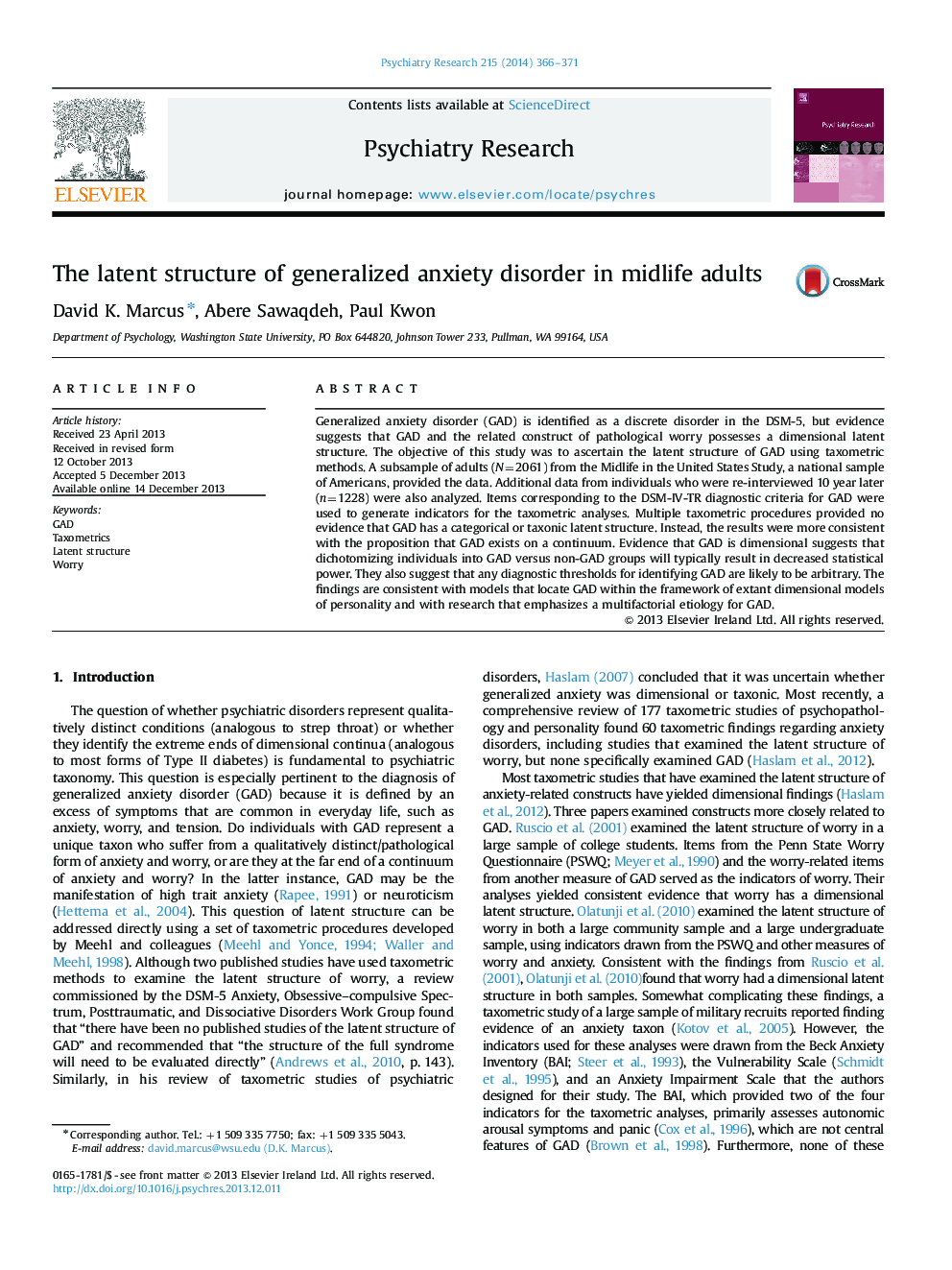| Article ID | Journal | Published Year | Pages | File Type |
|---|---|---|---|---|
| 333059 | Psychiatry Research | 2014 | 6 Pages |
Generalized anxiety disorder (GAD) is identified as a discrete disorder in the DSM-5, but evidence suggests that GAD and the related construct of pathological worry possesses a dimensional latent structure. The objective of this study was to ascertain the latent structure of GAD using taxometric methods. A subsample of adults (N=2061) from the Midlife in the United States Study, a national sample of Americans, provided the data. Additional data from individuals who were re-interviewed 10 year later (n=1228) were also analyzed. Items corresponding to the DSM-IV-TR diagnostic criteria for GAD were used to generate indicators for the taxometric analyses. Multiple taxometric procedures provided no evidence that GAD has a categorical or taxonic latent structure. Instead, the results were more consistent with the proposition that GAD exists on a continuum. Evidence that GAD is dimensional suggests that dichotomizing individuals into GAD versus non-GAD groups will typically result in decreased statistical power. They also suggest that any diagnostic thresholds for identifying GAD are likely to be arbitrary. The findings are consistent with models that locate GAD within the framework of extant dimensional models of personality and with research that emphasizes a multifactorial etiology for GAD.
